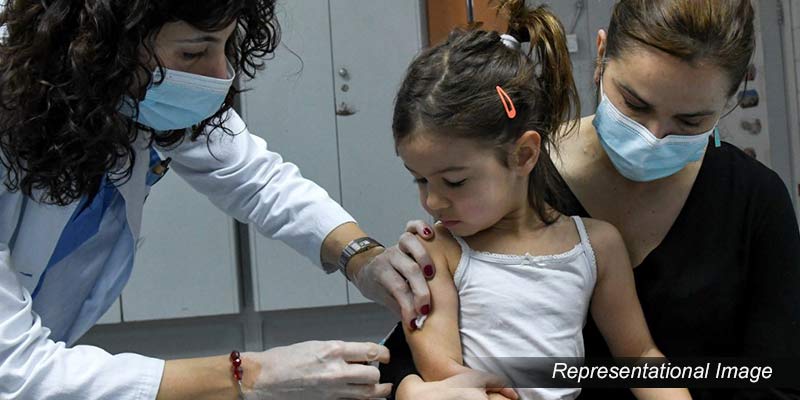- World
- May 09
How vaccine patches could transform immunisation coverage?
• Early data from a vaccine patch trial in the Gambia has shown promising indications that it could be effective in protecting children from measles.
• The World Health Organisation (WHO) has been helping to develop these vaccine microarray patches – or MAPS – as they are known, for several years.
• The patches could be a major breakthrough in protecting vulnerable populations from preventable diseases.
• They are potentially groundbreaking vaccine delivery technology that could really contribute to increasing the coverage of life saving vaccines like measles and rubella, especially in low resource settings.
• This is because they can be more easily delivered than vaccines that need to be injected, especially in outbreaks or in humanitarian emergency situations.
• At present, there are difficulties in reaching the last mile with the current injectable vaccines since they depend on a functional cold-chain and administration by well-trained staff, which can be challenging especially when working in unstable environments and harsh climates.
• Furthermore, most vaccines are administered via injection that may cause pain, and discomfort that leads to hesitancy, in addition to the risks of hazardous waste from syringes.
• The patches could be especially useful in combating measles and rubella. Vaccines for both of these diseases have been available for decades but coverage levels dropped during the COVID-19 pandemic and now there are many millions of susceptible children in many countries.
Advantages of vaccine patches:
• Vaccine patches provide an alternative to intramuscular and subcutaneous immunisation methods and have the potential to increase acceptability by caregivers and recipients while making vaccines more easy to administer.
• People, especially children, may be more willing to be vaccinated by a patch than by a needle. So there is really an acceptability advantage to the patches.
• They do not require the use of needles and can improve safety during administration, reduce the need for cold chains, enable easier storage and transport and remove the risks of needle waste.
• They can be integrated into new and existing strategies and immunisation plans, including those for disease-specific programmes to control, eliminate or eradicate diseases.
• Vaccine patches have the potential to substantially improve the productivity and resilience of governments to expand immunisation coverage and prevent millions of deaths through a more equitable access to vaccines.
Manorama Yearbook app is now available on Google Play Store and iOS App Store

